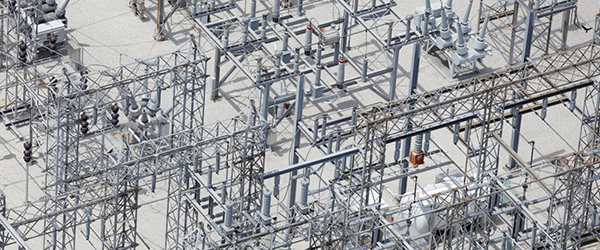Where did the “Electric Grid” come from?

Despite sounding like something from a science-fiction movie, the grid is actually what we call the intricate network of wires and transformers providing electricity to homes and businesses across the country.
Edison and an eager America
Thomas Edison’s version of the electric light bulb was the product that tipped the scales to getting power to the people. Before the electric light, electricity was only really used for telegraphs and the beginnings of the telecommunications industry. But, when people saw what electricity could offer, the demand was too great to ignore.
Outfitting the infrastructure
Using the best technology of the time, massive turbines were sent spinning with a plentiful and effective resource: coal. These turbines used magnets and wire to convert mechanical movement into electrical current. However, building a generator and installing the lines to carry the current is no simple task. The entire process was extremely expensive, and the task of hanging miles and miles of wire arduous. There’s no doubt about it: power companies were powerhouses of human effort. Over the course of the next 50 years, America’s electrical grid grew by leaps and bounds. At the time of Edison’s light, most generators powered only small pockets of communities. But as electricity became more and more important to the populace, the need for reliability increased.
Interconnecting utilities
To address any potential loss of power, a crossover of the utilities was created. The pockets of communities throughout the country began to overlap, and utilities shared the burden; if one plant went off-line for whatever reason, the other plants around it could come to the aid of the demanding public. This mutually-beneficial sharing of lines was called interconnection.
Super-charging the lines
By the 1920s, the grid was a smaller version of the technological marvel it was to become. Wires suspended across cities and threading into every home on the block was commonplace. However, utilities continued to build generating plants to meet growing demand, but were limited in how far those plants could send the power. Then, after World War II, the technology to create voltages Edison could only dream of became a reality. And with higher power you can travel longer distances.
The modern-day electrical grid
Through high-power lines, the entire country could be reached with electrical power. Towering giants with upturned arms were built to hold thousands of miles of lines across the landscape. Today, over 300,000 miles worth of power lines crisscross America interconnecting three specific regions. This net of wires weaving across the US looks remarkably like, well, a grid.
CLICK HERE TO LEARN MORE ABOUT RESIDENTIAL ELECTRICITY WITH IGS